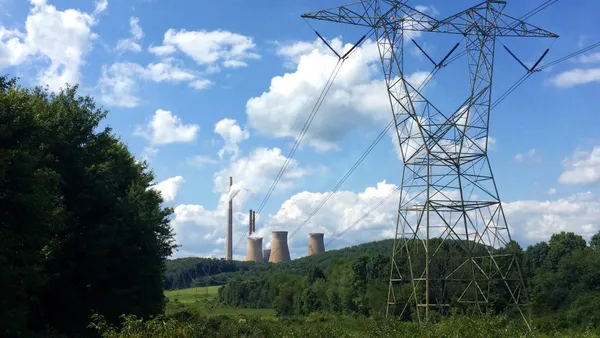Dive Brief:
-
California utilities highlighted concerns about the state's system reliability in integrated resource plans (IRP) filed Tuesday, in the wake of rolling blackouts that affected hundreds of thousands of Californians for the first time in two decades last month.
-
The blackouts "clearly demonstrate a need for an operational reliability assessment" to ensure that the planned resources in the state's integrated resource planning process are able to ensure system reliability, Pacific Gas & Electric (PG&E) said in its filing.
-
The main challenge for California is handling the net peak as solar begins to roll off the grid, said Seth Hilton, a partner at Stoel Rives, and getting the necessary resources into place relatively quickly, "because as we've seen from what happened with the blackouts, we have a lower peak than what we've had in the last years — but we just don't have the capacity anymore to meet it."
Dive Insight:
The California Public Utilities Commission (CPUC) conducts its IRP process on a two-year cycle, which kicks off with a "reference system portfolio" — that is, the optimal resource mix to help reach electric sector greenhouse gas targets at the end of the decade. In March, the CPUC adopted a 46 million metric ton (MMT) goal for the sector, although it also asked load-serving entities to look into the resources required to meet a lower, 38 MMT target as well.
The commission also outlined the optimal portfolio for that goal — supposed to guide the utilities' and other LSE's plans — which included more than doubling solar capacity, increasing wind capacity by nearly a third and adding 1 GW of long-duration storage to the mix by 2026, among other things.
But the commission's last IRP cycle did not identify a need for more resources on the grid, PG&E noted in its filing — despite the fact that months later, the CPUC ordered entities to procure around 3,300 MW of new capacity to address possible shortfalls on the system. The CPUC also sought in that decision to extend the lives of around 4,800 MW of gas plants that were scheduled to retire in 2020.
"A similar reliability concern exists for this 2019–2020 IRP cycle," PG&E said.
The CPUC and the California Independent System Operator (CAISO) need to ensure that the plans filed by load-serving entities in California collectively meet reliability needs, the utility added.
California's discussion around reliability was thrown into sharp relief last month when demand soared due to a heatwave, triggering a Stage 3 electrical emergency that initiated rolling blackouts. Last week, the CPUC approved seven lithium-ion storage projects proposed by PG&E, as well as 770 MW of storage resources proposed by Southern California Edison (SCE).
The approvals are significant, according to Hilton.
"It's a lot of capacity, but it's not necessarily going to be enough to meet the needs of the grid," Hilton said, adding that it doesn't necessarily match up with the potential operational needs that CAISO has outlined previously.
Regulators should conduct a "robust reliability analysis" during this IRP cycle, PG&E said. In addition, the utility pointed to a need to account for the broader fragmentation of California's load, as more community choice aggregators and other electricity providers emerge, in planning processes and ensure that procurement obligations are fairly distributed amongst all load-serving entities.
SCE, meanwhile, said its own analysis indicates that California could face significant capacity shortfalls between 2024 and 2026. The commission should begin work on procuring resources to meet this need early next year, SCE said, to account for the prolonged process of executing contracts, receiving regulatory approval, interconnection and permitting processes, and constructing projects before they can come online.
Reliability is likely going to be a major theme this IRP cycle, according to Jin Noh, senior manager at Strategen and policy and regulatory affairs manager at the California Energy Storage Alliance, in light of the recent blackouts, which were attributed in part to a heavy reliance on imports.
"This is where we really resolve some of those problems to get new resource procurement," Noh added.
The CPUC, along with other state regulators, is planning to conduct a root cause analysis into the specific causes of the blackouts last month. That analysis should include a closer look at resource adequacy, imports, retirements and load forecasts, San Diego Gas & Electric (SDG&E) said in its filing.
Maintaining existing gas facilities will be important to ensuring a reliable system during this IRP cycle, SDG&E said. At the same time, the utility highlighted the need to explore long-duration storage technologies, like hydrogen or pumped hydro.














